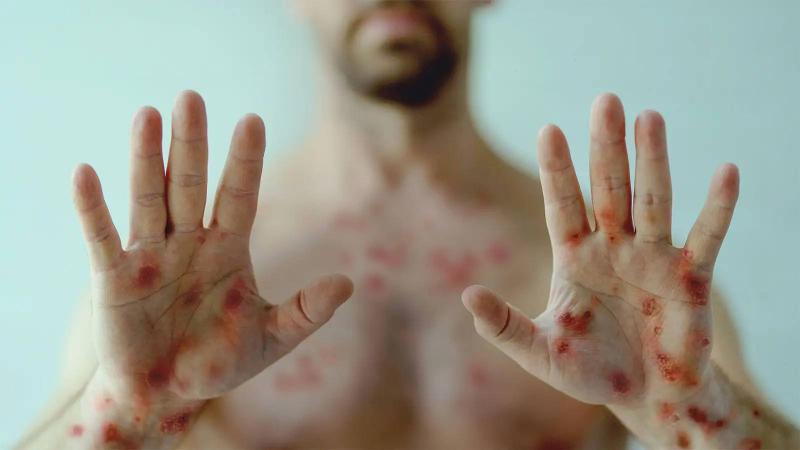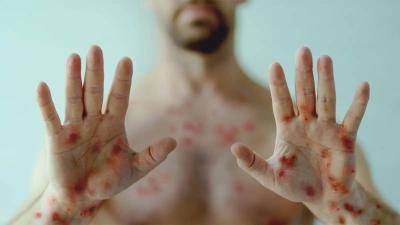The World Health Organization declared monkeypox a public health emergency of international concern for the second time in two years on Wednesday, following the spread of the viral outbreak from the Democratic Republic of the Congo to neighboring countries. This current outbreak raises more concern than the previous one because it involves a new variant of the disease, which experts say is the most significant mutation they have ever seen.
Monkeypox is a rare disease caused by the monkeypox virus. This virus typically infects rodents such as rats or mice, or non-human primates like monkeys, but it can also infect humans. Monkeypox cases are prevalent in Central and West Africa. Cases outside Africa often arise due to: foreign travel, imported animals, or close contact with an infected animal or human. Since 2022, cases of monkeypox have been reported in countries where the disease is rare, such as the United States. The Centers for Disease Control and Prevention (CDC) continues to monitor reported cases worldwide, including in Europe and the United States.
### What are the Symptoms of Monkeypox and What Is Its Nature?
Symptoms of monkeypox might begin to appear between 3 days to 17 days after exposure to the virus. The period between exposure and the onset of symptoms is known as the incubation period. Symptoms last from two weeks to four weeks and may include:
- Fever
- Rash
- Swollen lymph nodes
- Headache
- Muscle and back aches
- Chills
- Fatigue
One to four days after the fever begins, a rash usually appears. The rash typically starts on the face, hands, or feet before spreading to other parts of the body. However, in cases associated with the outbreak that began in 2022, the rash often started in the genital area, mouth, or throat. The rash goes through several stages: it starts as flat spots, turns into blisters, fills with pus, then crusts over before disappearing within two to four weeks. Monkeypox remains contagious throughout the duration of symptoms, meaning from the onset of symptoms until the rash and scabs have healed. It's important to see a doctor immediately if you develop a new rash or any monkeypox symptoms, even if you do not know anyone infected.
### How Does the Monkeypox Virus Spread?
Monkeypox infection results from exposure to the virus. It can be transmitted through close contact with an infected animal or human. The virus can also spread when a person touches objects (such as bedding) that were in contact with an infected person.
Monkeypox can spread from person to person through the following:
- Direct contact with the rash or scabs or bodily fluids of a monkeypox-infected person
- Prolonged direct exposure (more than four hours) to respiratory droplets of an infected person, including during sexual contact
- Using clothing, bedding, or any objects that have touched the rash or bodily fluids of an infected person
The virus can be transmitted from a pregnant woman to her fetus in utero. Monkeypox can also spread from animals to humans in these ways:
- Through bites or scratches from an infected animal
- Eating undercooked meat from infected animals or wild birds
- Using products made from infected animals, like skins and furs
- Direct contact with the rash or bodily fluids from infected animals
### What Can I Do to Avoid Getting Monkeypox or Spreading It to Others?
Follow these steps to prevent monkeypox infection and avoid spreading it:
- Avoid close contact with people who have a rash resembling monkeypox.
- Avoid touching any clothing, bedding, or other items that may have been in contact with an infected animal or human.
- Isolate individuals with monkeypox from healthy individuals.
- Wash your hands thoroughly with soap and water after contact with any infected person or animal. If soap and water are not available, use hand sanitizer containing alcohol.
- Avoid contact with animals suspected of carrying the virus.
Some smallpox vaccines may help prevent monkeypox, such as the ACAM2000 and Jynneos vaccines. These vaccines can be used for monkeypox prevention because the virus is closely related to the smallpox virus. Doctors may recommend that individuals exposed to monkeypox receive a vaccine. Some people at risk due to their occupations, such as laboratory workers, may also receive the vaccine. However, the CDC currently does not recommend that all individuals get vaccinated.
### What Is the Treatment for Monkeypox?
Most treatments for monkeypox focus on relieving symptoms. Care strategies can include managing skin damage from the monkeypox rash and ensuring adequate fluid intake to keep bowel movements soft and manage pain. If you are infected with monkeypox, isolate yourself in a separate room away from family members and pets until the rash and scabs have healed.
There is no specific approved treatment for monkeypox, but doctors may treat cases with some antiviral medications used for treating smallpox, such as tecovirimat (TPOXX) or brincidofovir (Tembexa). For individuals who are not expected to respond to the smallpox vaccine, a doctor may recommend immunoglobulin vaccination, which contains antibodies from individuals who have been vaccinated against smallpox.
### What Are the Complications of Monkeypox?
Complications from monkeypox can include:
- Deep scars on the face, arms, or legs
- Loss of vision
- Other infections
- Death, in rare cases
The variant of the monkeypox virus that emerged in 2022 (known as Clade II) rarely causes death. Remember that monkeypox remains a rare disease in the United States, and the virus does not spread easily between people without close contact. However, if you develop a new rash or any monkeypox symptoms, contact your doctor.




